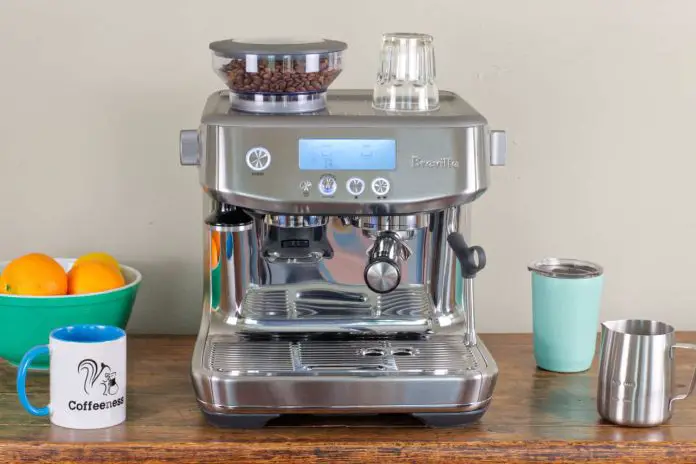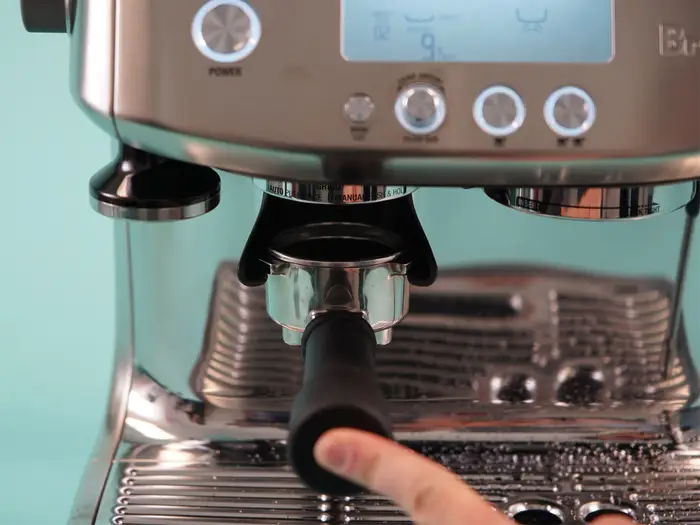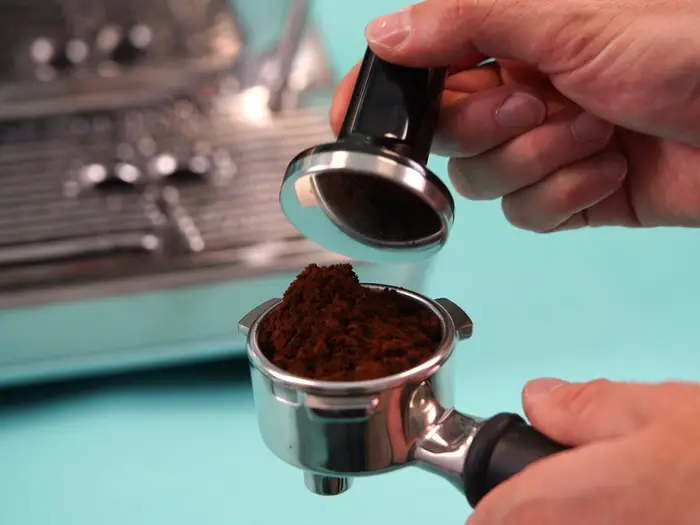There are no two ways about it. Any one of the greatest espresso machines is a significant investment. Even at the lowest level, we’re talking $400 or $500 for starters, and that doesn’t include a burr grinder (an additional $250+). In short, you want to get it right. When it comes to in-home, all-in-one espresso machines, we believe that Breville’s espresso machines or “Breville Barista Pro” are currently the safest and most user-friendly options for anyone looking to spend $1,000.
Nonetheless, Breville produces a staggering amount of machines that all seem alike. We tried the most of them, and the differences are subtle: honestly, any of them are excellent choices. For this review, we’ll look at one of our long-time favorites: the Breville Barista Pro.
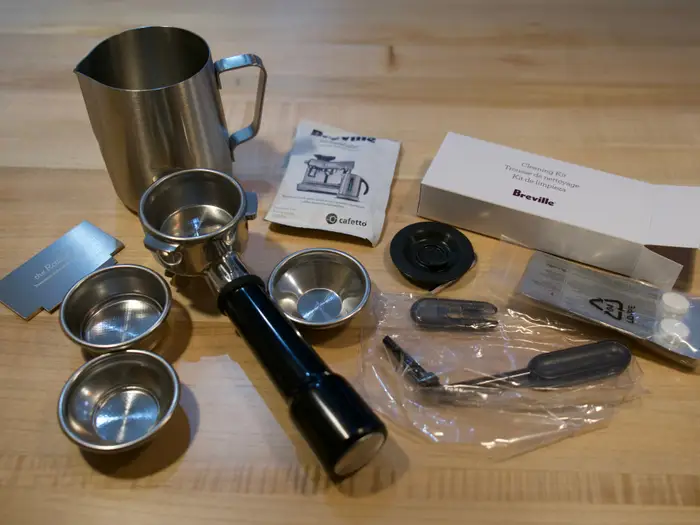
The portafilter baskets are perfectly engineered to empty quickly and neatly, even if you neglect to do it for a few days – something that many other designs fail to achieve. They’re also made of high-quality metal that won’t tarnish or scratch easily if you have to dig out grounds (though you should avoid using metal with them if possible).
As previously said, the Razor is a wonderful touch to help level the ground before tamping (though some experts prefer using a WDT tool instead). The milk-frothing pitcher isn’t our favorite design (the spout should be more prominent), but it functions nicely otherwise.
The cleaning tablets work with the backwash disc to clean from the front end of the group head (where hot water is delivered to the portafilter), and while there is a single packet of descaling powder, you’ll want to buy a supply (like Cafiza’s) and do it every couple of months or so to keep your machine running smoothly.
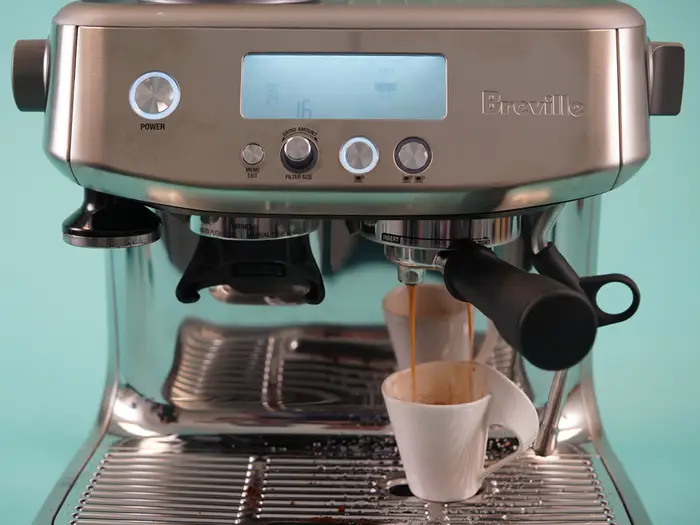
The Pro replaces the cylinder heating coil that Breville has used in other machines for years with a faster, quieter, and more powerful “ThermoJet” heating block. If speed is critical to you, Breville models with the ThermoJet heating element, such as this one, will fill your cup quickly.
The LCD interface also displays how far along the infuser is, demonstrating that the water is hot and ready to use at the push of a button. But, more significantly, it timings your shot, giving you a good sense of whether or not you’ve dialed in and tamped your grinds correctly. If your double shot finishes pouring in less than 25 to 30 seconds (Breville suggests roughly 20 seconds for a single shot), you should either adjust your grinder to create finer grounds or tamp your shot better.
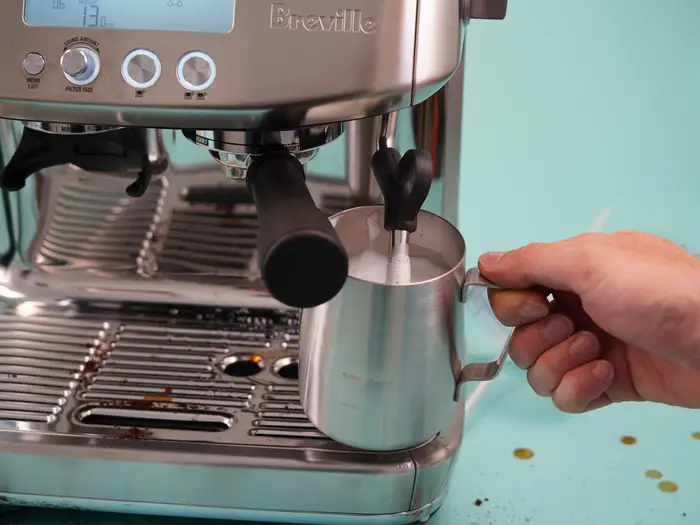
Breville’s representative explained to us that the milk wand on the Pro is still manual, but it is a little more robust, making foaming easier and more enjoyable. However, the frother on the Express was in good working order.
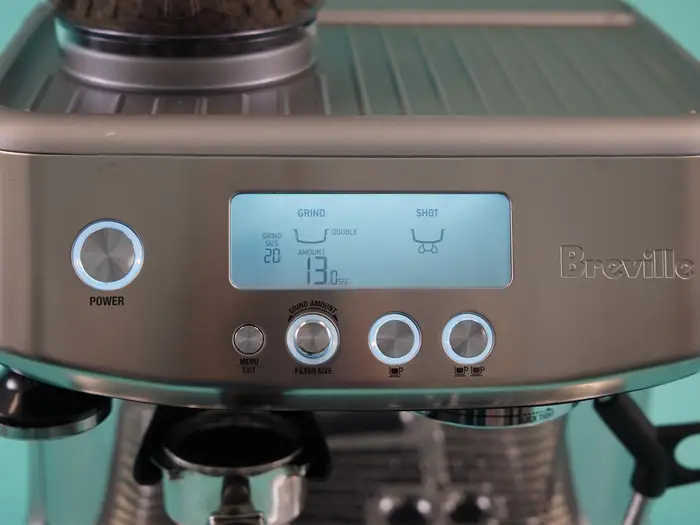
Inherently, this Breville Barista Pro machine outperforms the Barista Express. The thermal coil has been improved, the LCD panel now allows you to precisely time your shot and grind time, and you’ll get your morning shot much faster than with the Express.
The key distinction between the Express, Pro, and Express Impress is that the Pro does not include a pressure gauge. Granted, the nanometer (pressure gauge) is merely a guideline, and you’ll be able to differentiate a good pour from a bad one in no time, but the meter simplifies things. If you’re like me and dial the phone at six a.m. before work, you might prefer the slightly slower but more reliable Express Impress to the Pro.


